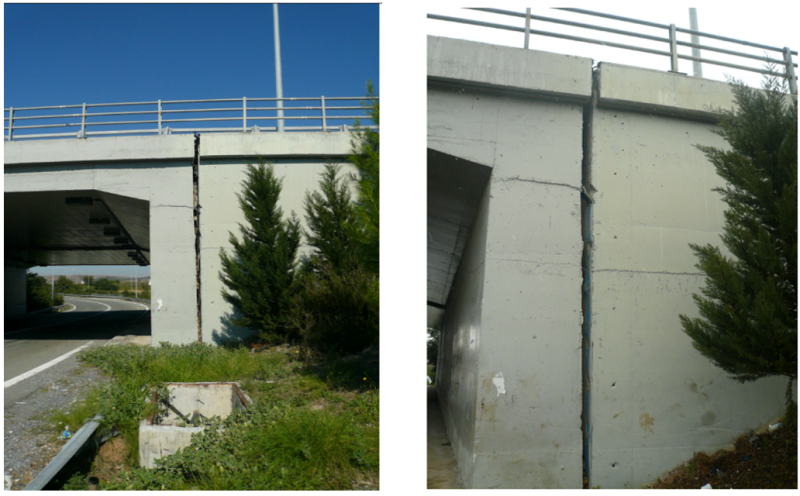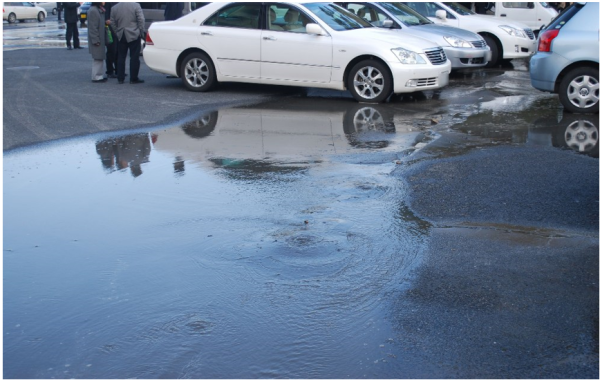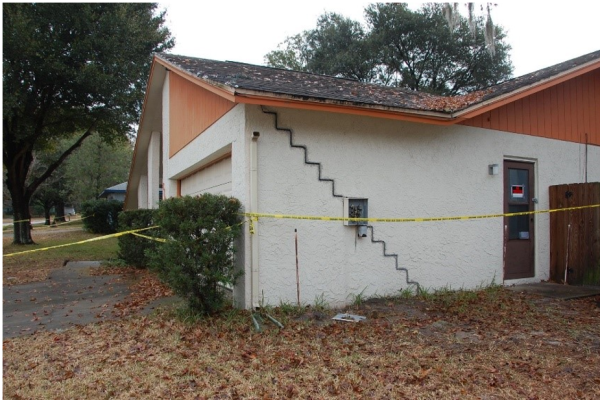4.2 Causes of settlement
The main reason for development of (intolerable) settlement is the application of (excessive) structural loading on the foundation. However, settlement may develop due to direct or indirect environmental loadings and actions too such as:
- Consolidation due to water table lowering, resulting in an increase in effective stress (Figure 4.3).
- Changes in soil density due to dynamic loadings e.g., seismic loading of dry coarse-grained soils resulting in dynamic compaction and saturated coarse-grained soils resulting in liquefaction (Figure 4.4).
- When a structure is founded on expansive soil deposits, heave i.e., upwards soil movement may develop due to soil moisture increase, or settlement due to soil shrinkage caused by decrease of its moisture content (Figure 4.5). Expansive soils, mainly high plasticity clays, tend to expand while absorbing water, and contract while expelling it.
- Collapse of the structure of sensitive soils.
- Poor compaction of fill materials.
The focus of this Part is on settlements due to application of structural loadings.




